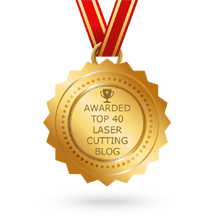
After you’ve selected the right material for your welding project, the next important consideration is joint design. We’ll be taking a look at the different types of joints and briefly discussing the pros and cons of each, especially in relation to laser and electron beam (EB) welding. Let’s start with one of the strongest joints, the groove joint, and what makes it so "groovy":
First, a quick definition: Groove joints or square groove joints are a type of butt joint, with two flat pieces parallel to each other and butted together with a 100% weld joining the two pieces. Here's an example:
Pros
- High strength: Provides complete fusion, low stress, and 100% penetration.
- Easy to machine
- Good distortion control: Welds shrink evenly and are less likely to distort.
- Easy to inspect
Cons
- Geometry limited applications
- Not suitable for applications with delicate items behind the weld, such as electronics
- Not self-aligning – fixturing or a backer may be required
- Sensitive to faying surface conditions
Additional considerations:
Fit up is important for groove joints, especially for laser and EB welding. Due to the energy density of these types of welding, the beam falls through large gaps.
Each type of joint has its advantages and disadvantages, but the biggest advantage of the butt joint and square groove joint is its strength. It can withstand stress better than any other type of weld joint. Pretty groovy, right?
Have questions about joint design for laser welding or EB welding? Ask one of our experts, or leave a comment in the space below.










